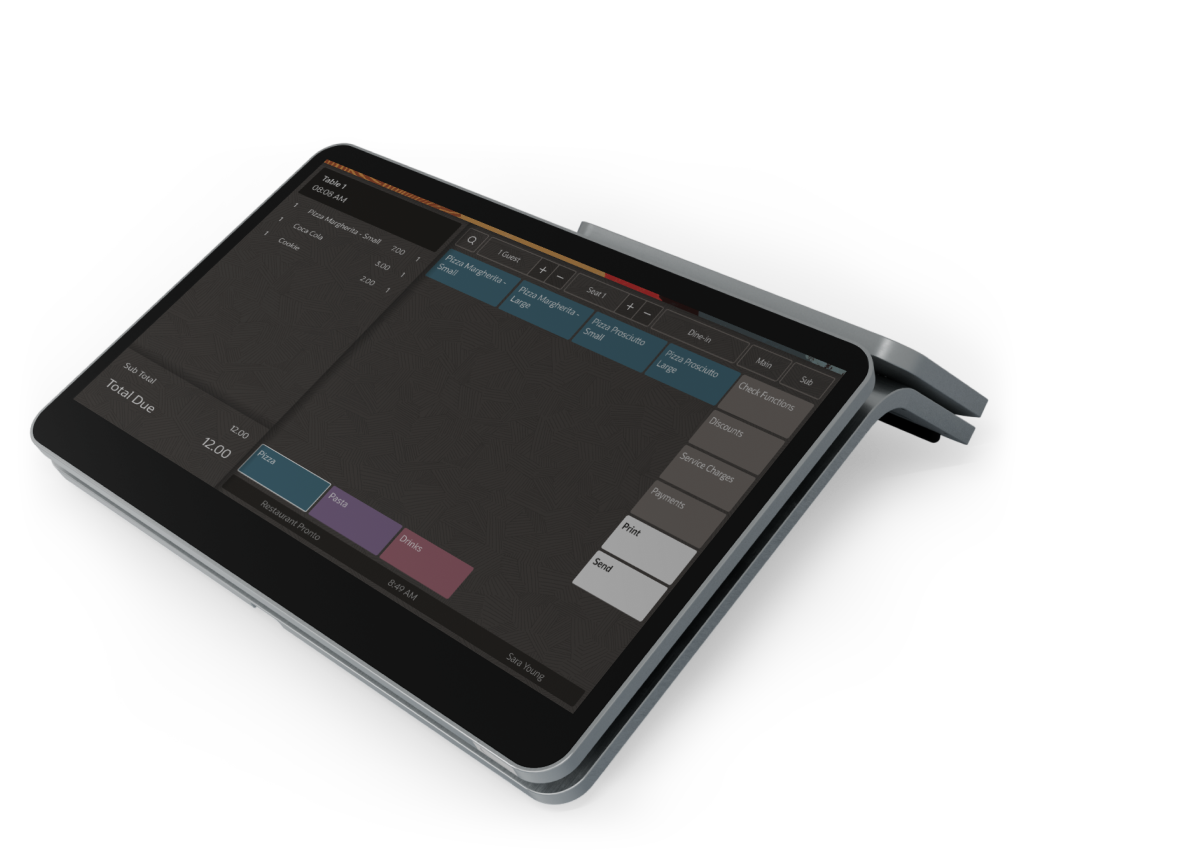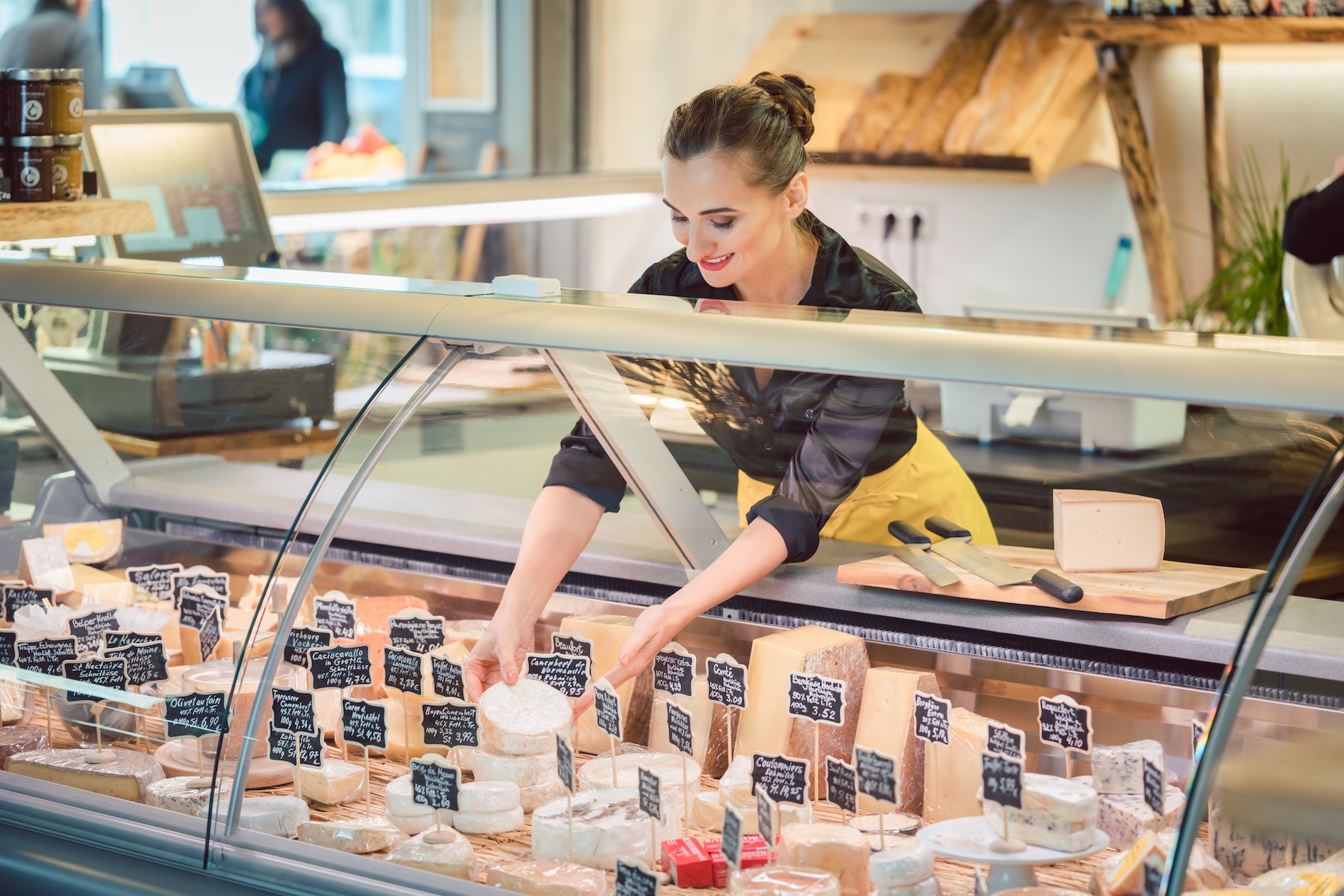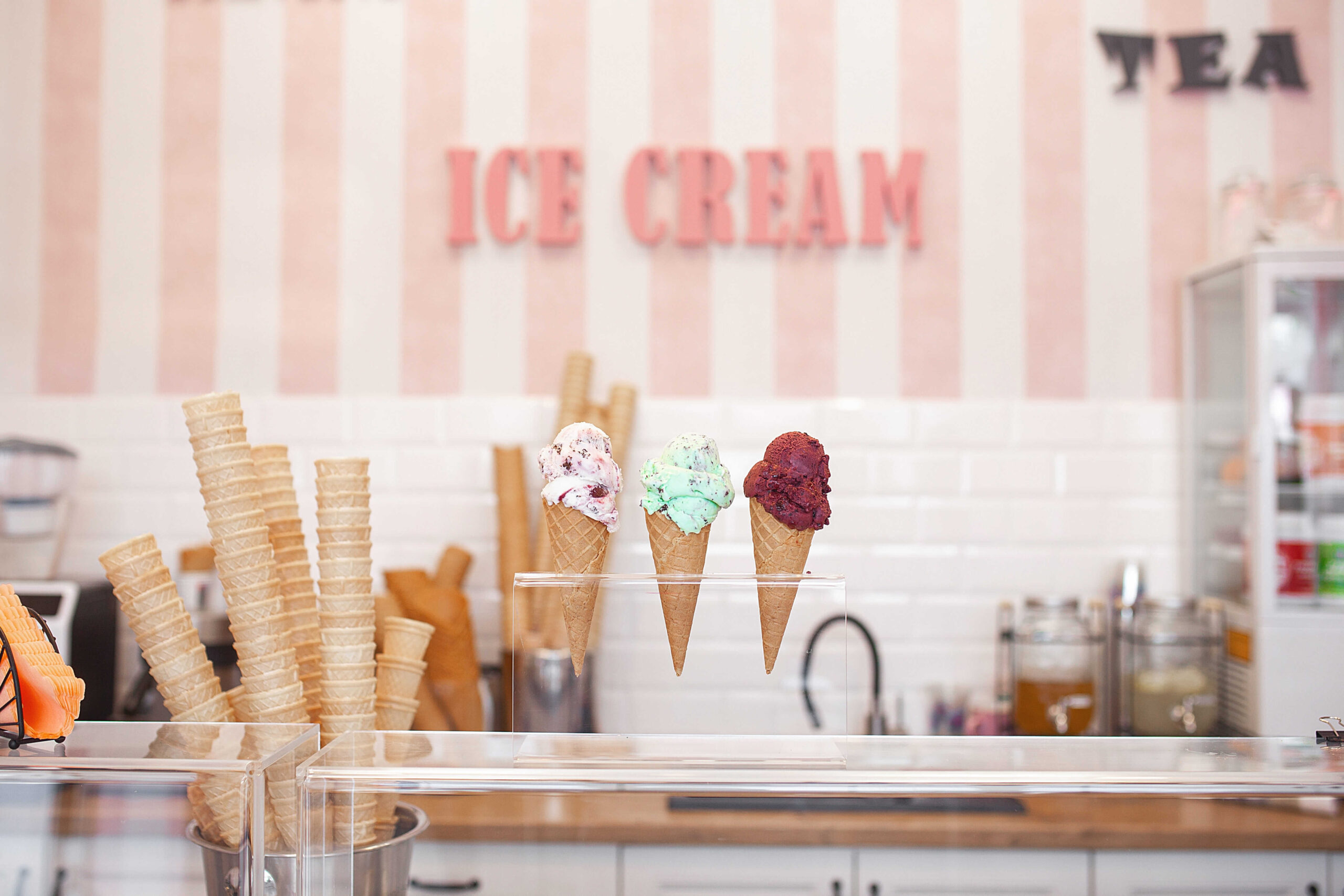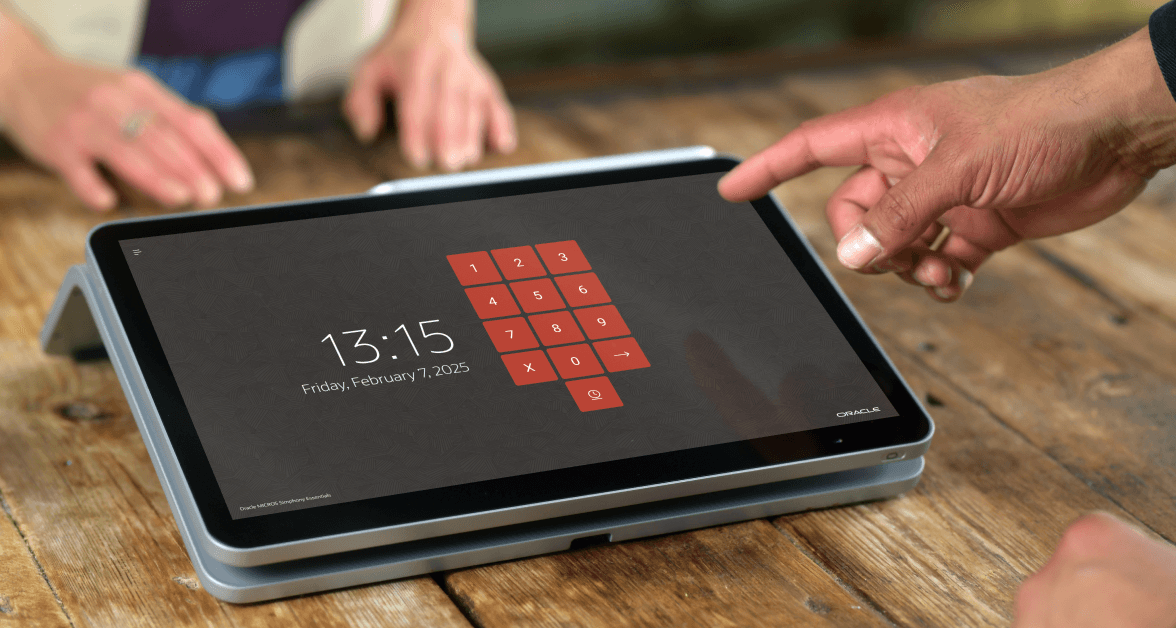Fast food trends 2026 are focused on technology, customization, health-conscious options, and enhanced convenience. Key trends include:
- AI and automation in drive-thrus and kitchens.
- Expanded plant-based and healthier menu items.
- Personalized build-your-own options.
- Seamless digital integration for ordering and delivery.
- Providing customer value, driven by deals and overall experience.
The fast-food restaurant industry has been forced to change because its customers have.
People still want quick service, but they now crave food that is better for their bodies and does not hurt the planet.
Behind the counter, a rapid evolution of technology and customer data is changing how restaurants operate.
For restaurant owners, understanding where the industry is heading is particularly important.
Below are the main fast food industry trends for 2026 and how they can help you stay in the loop and future-proof your fast food restaurant.
Let’s dig in!
- Customer behaviors are changing – menus should reflect health and awareness. Healthy, high-protein, and functional foods are now part of fast food menus.
- Sustainability is now more important than ever before. Waste reduction, energy efficiency, and eco-friendly packaging save money and build trust.
- Technological tools shape customer experience. Online ordering, loyalty programs, and complete POS systems drive both convenience and sales.
- Plant based menu options are the way to go. Almost every major fast food chain has at least one vegan item on their menu.
- Fast food restaurants can use AI assistants to understand demand, plan staffing, and improve menus.
1. Change in consumer behavior
Customers are becoming more educated on the health risks associated with consuming fast foods.
They still want speed and convenience, but they are also paying attention to what they eat and how much it costs.
However, value for money is still the top priority. Customers determine value by how good the food makes them feel and how healthy it seems. This is why menu engineering and marketing have started focusing less on affordability and more on sustenance.
You should include nutritional information on menus as well as a restaurant allergen list to inform your customers about what’s in their food.
With GloriaFood’s easy to use menu builder you can add that infomation without hassel.
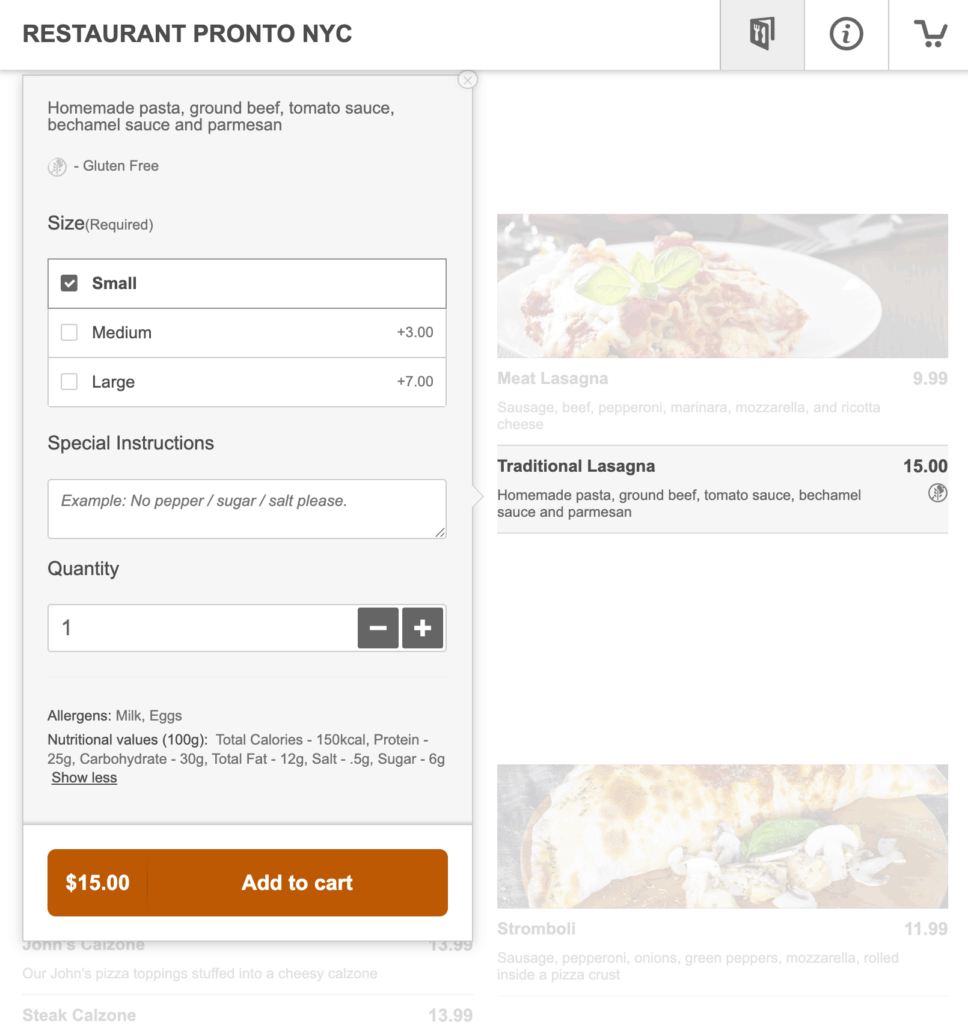
Another key shift in customer behavior is loyalty. Customers are now less loyal to brands and more loyal to restaurant experiences.
If one restaurant makes ordering easy and offers consistent quality, they will come back. Loyalty programs built around personalization, not points, are becoming the new fast food trends.
Using a product like GloriaFood’s restaurant marketing software can help you create more customized offers for your clients, improving the customer experience and increasing loyalty.
Segment your clients by new or returning, order type, payment type, number of past purchases, etc. Use these segments to create promotions, such as “buy one get one” deals, discount % on cart, fixed $ discount on cart, etc.

2. Sustainability
In the past, fast food restaurants used language that was unclear when discussing sustainability. They switched from plastic straws to paper straws, used recycled napkins, and mounted a few solar panels on the roof.
That is no longer sufficient. Customers want evidence that fast food restaurants are actually changing. This has pushed the fast food restaurant industry to reconsider everything, including supply chains and packaging.
One use plastics are becoming a thing of the past. They are now being replaced by reusable containers and cardboards. One of the latest fast food trends is that for a slight discount, some restaurants allow customers to bring their own cups or packaging.
Here’s what fast food restaurants can do to be sustainable in 2026:
- Source responsibly: Use local, seasonal, and ethically produced ingredients; add more plant-based menu options.
- Use sustainable packaging: Switch to compostable or recyclable materials and reduce single-use plastics.
- Cut food waste: Improve inventory tracking, donate surplus food, and compost kitchen scraps.
- Save energy and water: Upgrade to energy-efficient equipment, LED lighting, and low-flow fixtures.
- Green the supply chain: Shorten delivery routes, use eco-friendly transport, and go digital with menus and receipts.
- Engage staff and customers: Promote eco-initiatives, reward sustainable choices, and train employees on green practices.
- Design sustainable spaces: Incorporate renewable energy, eco-friendly materials, and energy-smart layouts.
3. Technology
There have been some significant advances in fast food technology trends over the past few years. What used to be seen as futurist and far-fetched has already made its way into fast food restaurant trends for 2026.
Data now drives everything, including menu items and promotion timings. Ordering systems can now learn customer preferences, visiting times, and spending habits.
This isn’t just about collecting data anymore. It’s about creating a smoother and more personal experience. Customers expect fast and accurate service; they don’t want to go looking for the order button or scroll through tons of irrelevant menu items.
The fast food restaurant trends of 2026 provide systems that meet these needs by remembering preferences and predicting choices.
Let’s take a look at some of the most important fast food technologies on the radar for 2026:
Restaurant automation
Many restaurants now depend on AI-assisted systems to handle tasks that used to need a full crew. They use machines that control frying times, manage portion sizes, or organize orders without error.
These systems work faster and help reduce waste and control costs.
Automation also addresses one of the biggest challenges in the fast food restaurant industry: labor shortages. Shifting repetitive and difficult tasks to machines reduces the reliance on human workers.
Restaurant owners are finding balance by allowing machines to take care of mundane tasks while people focus on the more human side of operations like interacting with customers and food presentation.
Online ordering systems with delivery integration
Online ordering paired with delivery integration has also improved. Fast food restaurants no longer treat delivery as an afterthought, it is now a vital part of their business.
Some of the best online ordering systems combine fulfilment timing with delivery routes into a seamless process. This makes it feel effortless for customers, who get an estimated delivery time and are in the loop regarding their delivery.
For restaurant owners, delivery heatmaps let you know where your hotspots are so you can use that information to tailor promotions for areas with less frequent deliveries.
Use the GloriaFood restaurant flyer maker to create flyers with a free delivery promotion. Then, hand them out around your community or place them in take away bags when deliveries are made. You can learn more about delivery heatmaps in this video:

Complete fast food POS system
One of the challenges facing the fast food industry is restaurant owners finding a complete QSR point of sale system.
In a fast food restaurant, speed and accuracy are paramount. They can be the key to repeat business and a huge part of your brand identity.
A quick service POS system simplifies:
- Order taking
- Payments
- Stock management
- Employee management
This helps workers focus on preparing food and serving customers while reducing errors.
A good POS system should contain:
- Fast & secure payment processing – so you can accept several forms of payments (card payments, cash payments, mobile payments).
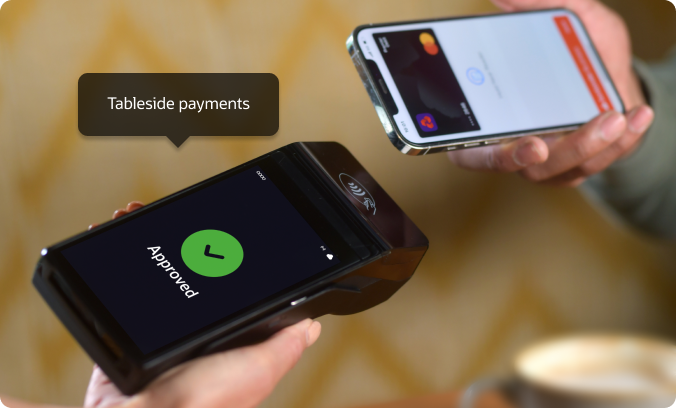
- Offline mode – is necessary on days with a weak or non-existent internet connection. The POS remains operational so you can open check and accept payments, and syncs to the cloud when the connection is re-established.
Future-proof your fast food business
Use technology and insights to stay competitive in 2026 and beyond
Start for Free Today- QR Menu code ordering – this enables customers who dine in to order and pay from their mobile phones. Print unique QR codes for each table so that your front of house knows exactly which table your order is coming from. This reduces steps and turnover time. You can set the orders to be auto accepted through the POS and sent directly to the kitchen for preparation.
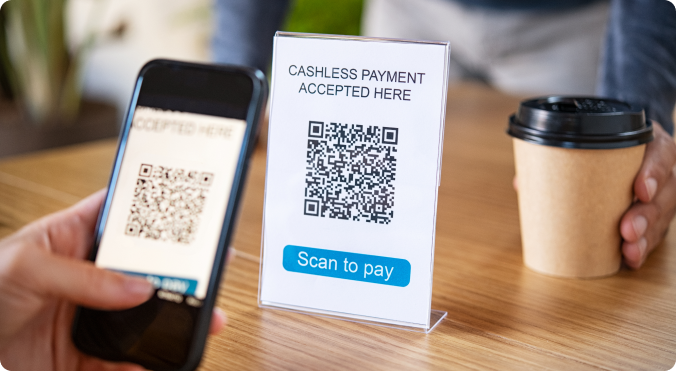

- Online order integration – orders placed from your restaurant website, or social media profiles are sent directly into the POS. There is no need to manually enter the information into the POS a second time.
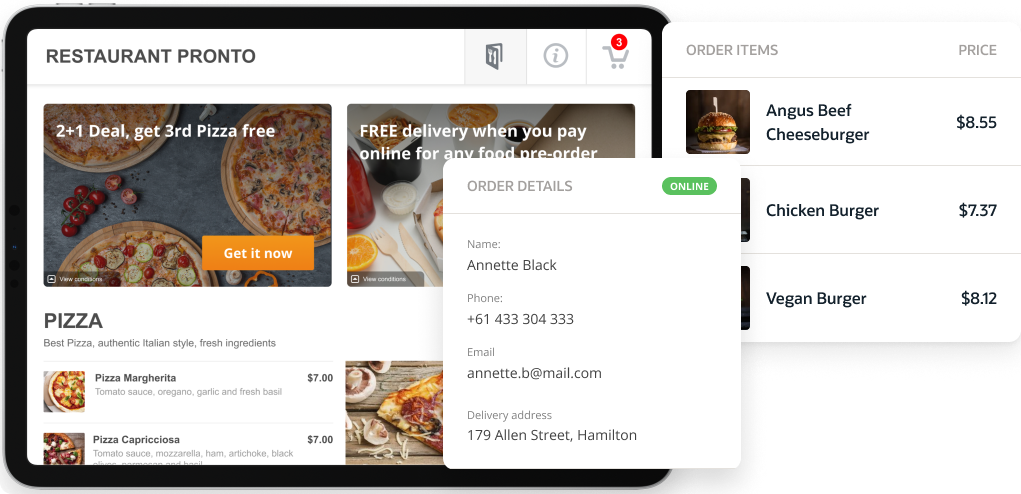
- Printer management – this allows your POS and kitchen printers to communicate so orders go in the right place. For example, food items go to the kitchen and bar items print to the bar.
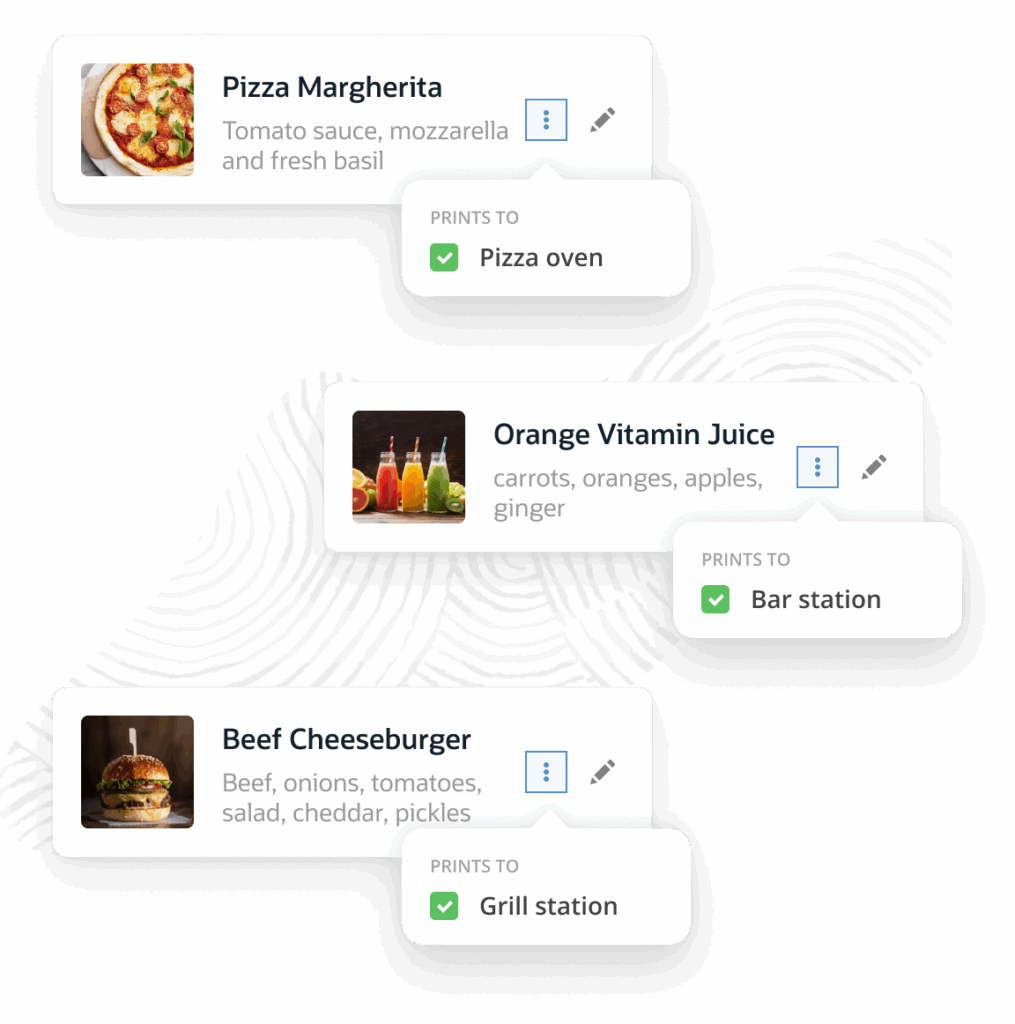
- In-store & online reporting & analytics – This feature combines online and in-store transaction data into a centralized analytics dashboard. It provides multiple insightful reports including:
- Daily sales
- Property financial summaries
- Employee financial reports
- Employee tip reports
- Employee open check report
- Employee journal report
- Employee closed check report
- Future open check report
- Check journal report
- Tax summary report
This allows you to monitor performance, make informed business decisions, and optimize menus by:
-
- Identifying best-selling items
- Reconciling financial data daily
- Detecting potential fraud through check journal reports
- Evaluating staff performance
- By consolidating data from all sales channels, GloriaFood POS gives you a clear view of your operations to boost overall profitability.
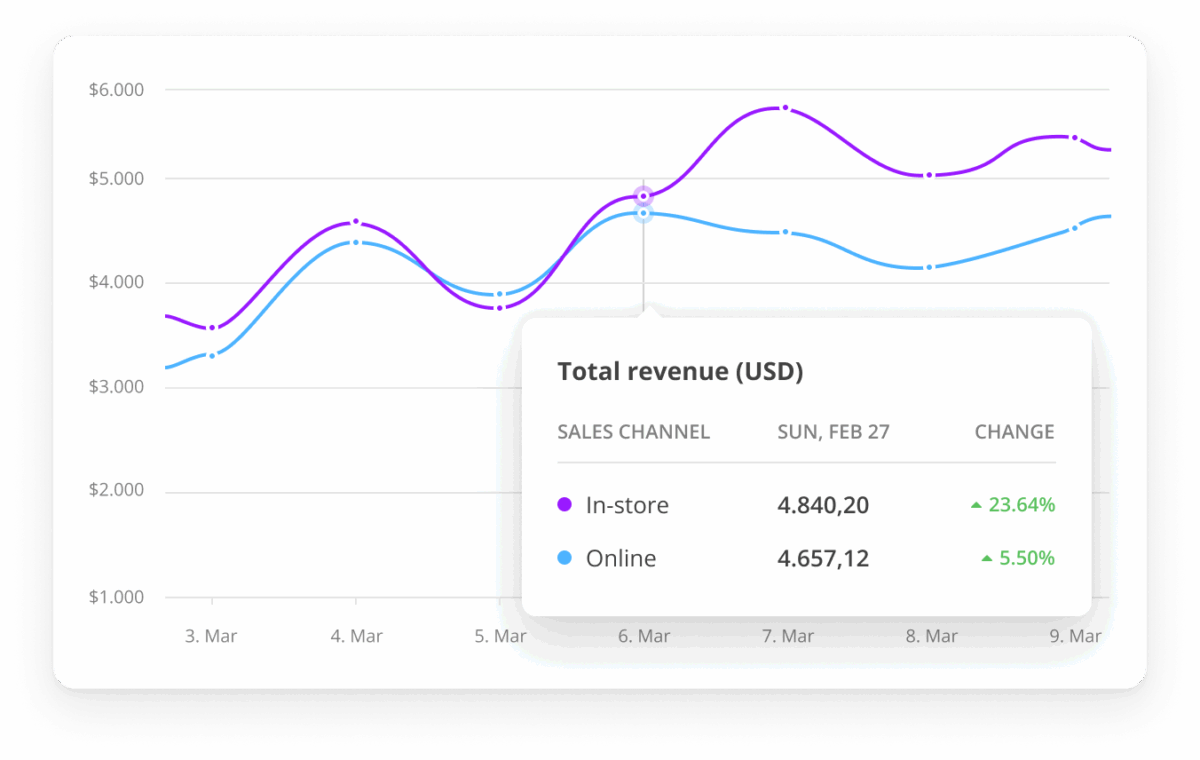
Staff management & permissions: this feature allows you to:
- Easily manage employee roles.
- Control permissions.
- Track all transactions from a single dashboard.
- Add and manage staff profiles.
- Assign different user roles with specific access levels to various POS operations.
- Use a dedicated “training mode” for new employees that does not impact financial reporting.
- Get access to transparent employee activity logs for accountability by assigning a unique POS ID to every team member.
- Add, remove, and update employee information as needed to streamline operations.

4. Plant-based options
Plant based menus in quick service restaurants was practically unheard of a while back., Now, with healthy fast food trends almost every big chain has at least one item on the menu.
Many customers are eating less meat while trying to feel better about what they buy. These types of customers make up a large and growing share of the fast-food industry, so fast food restaurants had to adapt to the demand.
Here’s what you can do to introduce the plant-based options in your restaurant.
- Develop and promote burgers, nuggets, wraps, and salads made from plant-based proteins like soy, pea protein, or mushrooms.
- Clearly mark plant-based options on the menu to make them easy to identify.
- Implement separate cooking areas or equipment to avoid cross-contamination with meat products.
- Allow customers to swap animal-based ingredients for plant-based alternatives in existing menu items.
- Provide nutritional info and highlight benefits like lower calories or cholesterol for plant-based options.
- Promote the environmental benefits of choosing plant-based meals.
- Educate staff on plant-based diets so they can better assist customers and answer questions.
- Experiment with spices, sauces, and textures to make plant-based meals appealing and flavorful.
- Price plant-based options competitively to encourage trial and repeat purchases.
- Add more plant-based side options like fries, salads, fruit cups, or vegetable snacks.
- Run campaigns targeting flexitarians, vegans, and vegetarians highlighting tasty plant-based choices.
5. A more personalized experience
Ordering food has become one of the most important parts of the customer experience. Think about it, most people now decide what to eat from their phone, not from a menu board. Fast food chains have capitalized on this.
Their apps remember your favorite meals, when you like to order, and what promotions you like the most. If you always grab a coffee and sandwich at 8 a.m., the app might have it ready to reorder with one tap. If you skip fries but love dessert, the next promotion you see might offer a free ice cream.
At the drive-thru, AI voice assistants take complex orders without getting them wrong. In some cars, you can order from the dashboard without pulling out your phone.
Restaurants use all this data to schedule employees, adjust pricing, and test new menu items. They can predict when certain products will sell out or when extra staff is needed before the rush even starts.
Wrapping up
Fast food restaurant trends for 2026 focus on the change in customer behavior, the increase in sustainability, the expansion of technology , the inclusion of plant-based options, and the introduction of personalized ordering.
If you incorporate these ideas in 2026, your restaurant can stay afloat and you will remain competitive in the industry.
Stay ahead of industry changes
Refine your fast food business to adapt to new customer habits and technologies
Get Started Free TodayFrequently Asked Questions
The industry is mostly shaped by technological innovation, health and sustainability, and menu diversification.
Technology and automation:
- Widespread AI integration: Artificial intelligence is being implemented throughout the fast-food experience to boost speed, accuracy, and personalization. This includes AI-powered drive-thru systems, dynamic menu boards, and real-time inventory management.
- Increased automation: Robots are handling repetitive kitchen tasks like flipping burgers and cooking fries, hence addressing labor shortages.
- Enhanced digital experience: Mobile apps have become standard. They streamline ordering, payments, and loyalty programs. Digital ordering is more enhanced with personalized recommendations based on customers order history.
- Advanced delivery: To improve delivery logistics, some companies are exploring drone and autonomous vehicle delivery services, particularly in urban areas.
Health and sustainability:
- Plant-based evolution: The plant-based movement is moving beyond simple meat substitutes. Chains are focusing on authentic flavor and texture, integrating plant-based options seamlessly into menus to appeal to a wider audience.
- Health-conscious innovation: Healthier menu items are no longer optional. Restaurants are adding more fresh, whole-food ingredients and offering transparent nutritional information.
- Eco-friendly practices: Fast-food companies are adopting more sustainable business practices, from using compostable and recycled packaging to implementing zero-waste cooking techniques.
- Ingredient transparency: Consumers are more interested in where their food comes from. Brands are responding by communicating their ethical sourcing and sustainable practices.
Menu innovation and consumer tastes:
- Global flavor fusion: Fast-food menus are incorporating more adventurous, globally inspired flavors. Trends include combinations like Korean BBQ tacos and the use of chili oil.
- Sweet and spicy combinations: The “hot honey” trend continues to be popular, with chains developing more sweet and spicy sauces and flavor profiles to satisfy younger consumers.
- The rise of chicken: Crispy chicken products, such as nuggets and tenders, are taking over burgers.
- Nostalgia-driven offerings: Brands are reintroducing discontinued fan-favorite items from past decades. Tapping into customers’ emotional connections creates excitement and loyalty.
- Beverage innovation: Chains are expanding their beverage menus with both new soft drinks and a wider variety of premium non-alcoholic drinks and specialty coffees.
Value and convenience:
- Emphasis on value: In response to inflationary pressures, fast-food companies are focusing on budget-friendly meal deals and promotions to attract price-conscious consumers.
- Premium quick service: The “fast-casual” restaurant format continues its explosive growth by delivering quick service with higher-quality ingredients and elevated experiences.
- Focus on convenience: From drive-thru improvements to seamless mobile ordering, the industry is constantly innovating to reduce friction and save customer’s time.
Gen Z food trends are shaped by a digital-first lifestyle, where social media, especially TikTok fast food trends, dictates viral recipes and aesthetics.
This generation prioritizes functional foods with benefits like gut health and stress reduction.
Their demand for bold, global flavors has fueled the popularity of fusion cuisine and international ingredients, while sustainability drives choices towards plant-based diets, ethical sourcing, and upcycled foods.
Convenience is also key, with frequent snacking, on-demand delivery, and easy-to-prepare meal solutions fitting their busy schedules.
You don’t need a full robotic kitchen to benefit from automation. Start small with tools like:
- Smart fryers
- Digital ordering systems
- AI-powered scheduling software
These can have a big impact without a huge investment.
The goal is to reduce repetitive work, not replace your entire team. Focus on systems that pay for themselves through saved labor hours or reduced waste. Over time, you can expand as revenue grows.
What’s the best way to design a 2026-ready menu?
Include a mix of familiar comfort items and health-forward options. Use real ingredients and keep portions moderate. Customers want fast food that feels responsible but still tastes good. Also:
- Keep your menu small
- Allow customers to personalize their meals
- Test limited-time offers
- Rotate seasonal items
- Use customer data to see what sells
Hiring challenges aren’t going away, so the solution is smarter team design. Build smaller crews where each member can handle multiple roles.
Use digital tools to automate scheduling, training, and performance tracking. Offer internal development and reward reliability over experience.
People stay longer when they feel trained, trusted, and part of a stable system. Your team becomes your biggest competitive edge.
Customers look for meals that:
- Feel balanced
- Have fresh ingredients
- Display clear nutritional values
- Have less processed ingredients
They’re paying attention to portion size and protein quality. Some expect plant-based or functional foods with added benefits like fiber or probiotics.
Start with low-cost changes that have measurable results:
- Switch to recyclable or compostable packaging
- Track and reduce food waste
- Optimize your energy use
Many sustainability efforts like better inventory control or efficient lighting cut costs.
Communicate progress to customers without turning it into a marketing campaign. Transparency builds trust and positions your restaurant as responsible and future-minded.
Get your restaurant POS system
More than [[restaurants_number]] customers have advanced their restaurant businesses with GloriaFood
